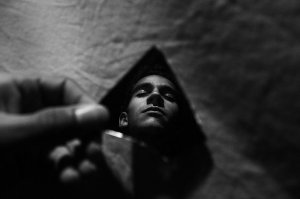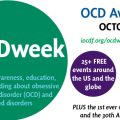Body Dysmorphic Disorder (BDD)

Body Dysmorphic Disorder (BDD) is an OCD-like syndrome that involves hyper-attention to one or more perceived bodily defects, imperfections, or flaws.
What is Body Dysmorphic Disorder (BDD)?
Body dysmorphic disorder (BDD) is not formally classified as an anxiety disorder; however, it shares many overlapping features with anxiety disorders like obsessive-compulsive disorder (OCD).
In contrast to OCD which typically focuses on specific external feared outcomes, body dysmorphic disorder involves hyper-attention to one or more perceived bodily defects, imperfections, or flaws. BDD “flaws” are experienced as distressing and intolerable.
In some cases, the imperfections that bother individuals with body dysmorphic disorder can be perceived by other people, but BDD magnifies and distorts these imperfections in the eyes of the sufferer. In other cases, individuals with BDD notice and attend to “flaws” that cannot be readily perceived by others. Regardless of the form of one’s symptoms, body dysmorphic disorder is associated with extreme distress and shame. Moreover, because BDD-related “flaws” are often perceived as being permanent, inescapable, or un-fixable, many individuals with body dysmorphic disorder experience hopelessness, depression, self-loathing, and suicidal thoughts. Due to shame about their appearance, many people with BDD go to great lengths to keep their symptoms a secret.
Individuals with body dysmorphic disorder often use mirrors to check or scrutinize their appearance. They also engage in a variety of avoidance behaviors in order to mask or hide their perceived defect(s) from others. They often avoid going out in public (e.g., skipping class or work), limit involvement in situations in which they might be the center of attention (e.g., dating), or spend excessive time trying to camouflage, disguise, or alter their appearance. Preparation for leaving the house may involve elaborate grooming behaviors that span hours every day.
Although many people have sensitivities about certain aspects of their appearance, typical sensitivities do not reflect BDD. By comparison, symptoms of body dysmorphic disorder are extremely distressing and potentially disabling.
The checking and grooming rituals that characterize body dysmorphic disorder resemble the compulsive behaviors found in obsessive-compulsive disorder. However, there are some notable distinguishing features between individuals with OCD and BDD. One of the major differences between OCD and BDD is the degree to which one recognizes his/her rituals as excessive or unreasonable. Although individuals with OCD experience extreme anxiety about their particular feared outcome (e.g., fear of getting sick, fear of hitting someone with their car), they often recognize that their rituals are excessive. This is particularly true when the individual is not actively exposed to a symptom trigger.
In contrast, body dysmorphic disorder tends to be associated with poorer insight (Veale, 2004). Most individuals with BDD are convinced that their “defects” are obvious to everyone. They often are quite certain that these “flaws” make them appear hideous, ugly, or deformed to other people. Because these beliefs are so strongly held, the need to disguise or mask the appearance transcends most situations and feels nearly impossible to resist. People with body dysmorphic disorder fear that if they do not hide their perceived defect, they might suffer extreme embarrassment or shame. Regardless of how others might actually react, feeling physically exposed is experienced as being intolerable.
Is Body Dysmorphic Disorder (BDD) a form of vanity?
Absolutely not.
Individuals with body dysmorphic disorder are not vain, although individuals unfamiliar with the condition might mistakenly assume so on the basis of the amount of time individuals with BDD spend primping and grooming.
Vanity involves taking pride in one’s appearance. In contrast, BDD involves hating one’s appearance.
Whereas grooming behaviors in vain people are attempts to appear more attractive or desirable, BDD compulsions reflect attempts to escape or control unwanted feelings of ugliness. The checking and grooming rituals common in BDD are experienced as distressing rather than enjoyable.
Many people with BDD are humble, likeable people who experience perceptual anomalies that cause them to misprocess information about themselves. Unfortunately, these perceptual abnormalities cause them to mistakenly consider themselves ugly, deformed, or hideous.
What causes Body Dysmorphic Disorder (BDD)?
Why do people develop BDD? It is thought that people with body dysmorphic disorder have information processing abnormalities (Yaryura-Tobias, Neziroglu, & Torres-Gallegos, 2002).
People with BDD appear to misprocess information about their own appearance. Essentially, when they look in the mirror, they over-attend to information about flaws. They have a hard time processing reflections holistically and instead get stuck in over-analyzing and trying to “fix” one specific aspect of their appearance. Because they themselves over-attend to information about their own appearance, they assume that other people will do likewise.
People with body dysmorphic disorder also appear to incorrectly process emotional information about other people. In comparison to people without BDD, people with BDD are more likely to perceive neutral expressions as being angry, hostile, or rejecting (Buhlmann, Etcoff, & Wilhelm, 2006).
BDD is also associated with learning-related factors. The avoidance behaviors and excessive grooming rituals that characterize BDD prevent people with the disorder from having the types of “corrective learning experiences” necessary to resolve their symptoms. Because individuals with BDD only get social feedback about their appearance after they have spent hours doing “damage control”, they mistakenly assume that their rituals are necessary to keep others from noticing their flaws. These compulsions are thus reinforced and perpetuated.
Body dysmorphic disorder also appears to be genetically-linked. Although BDD affects only about 2% of the general population (Rief, Buhlmann, Wilhelm, Borkenhagen, & Brahler, 2006), about 8% of individuals with BDD have another family member with BDD (Bienvenu et al., 2000). Moreover, about 7% of individuals with BDD have a first-degree family member with OCD (Phillips, Gunderson, Mallya, McElroy, & Carter, 1998).
How is Body Dysmorphic Disorder (BDD) treated?
Effective treatment of body dysmorphic disorder typically addresses all of the above factors through a combination of cognitive therapy and behavioral exposure. BDD treatment often has elements that resemble exposure and response prevention for OCD.
When I treat BDD in my South Florida psychological practice in Palm Beach County, we begin with cognitive therapy. We then progress to building an exposure hierarchy that involves gradually decreasing avoidance behaviors and resisting rituals while increasing activities that reflect one’s goals and values.
In future posts, I’ll talk more about the symptoms of BDD and the approach to treatment I use in my Palm Beach practice.
Questions? Comments? Struggling with body dysmorphic disorder (BDD)? Sound off below.
Want Updates about New Content?
Follow Me!
Follow @drstevenseay












Your statement “they have a hard time processing reflections holistically” really hit home with me. I don’t know if it’s possible to have a “touch” of BDD, but I believe I do. I have certain facial flaws that bother me immensely and many times my husband has told me that he can barely see them. The other facial flaws I have are there and they are noticeable, but I’m not sure that other people focus on them as much as I do. A few times, I have been looking in the mirror, criticizing myself, and then all of a sudden I will realize that I’m not looking at the whole image. That realization has only happened a couple of times, but I just realized that it has happened most recently as I’ve been getting better from the OCD. I will try really hard to remember the holistic view from now on. I’m so glad I read this post. Thank you.
Hi Sunny,
You make a great point. Given the overlap between OCD and BDD, it’s not at all uncommon to have some crossover symptoms. And I think your larger point is really useful too. In OCD, attention tends to get stuck on situations and details perceived as dangerous in much the same way that in BDD, attention gets stuck on details that signal “flaws” or “wrongness.” What is ERP really but a strategy designed to help us learn to process information differently? Once we become less afraid of the details, we become able to view ourselves (and the world) more holistically.
What is the term/disorder for those who literally feel physical sensations within the area of the body that is unconsciously being focused on/criticized? Also, these physical sensations have lead to noticeable changes within that area of focus. For example when I was about 15 I used to fear having abnormally long arms after seeing a video where this subject was joked about. Today I am about 6′ with the same “wingspan” as someone I know who his 6′ 7″. I feel as though the physical sensations I felt in my arms when I was young has played a role in this area. There are other examples I have noticed similar to this as well. Sometimes it is extremely hard to stop these sensations as they go from one area of the body to another rather than going away. It is not like I enjoy having to monitor these sensations and constantly pushing them to some other part of body or try to suppress or renounce them. It is really a burden that I have struggled with this since 13, I am now 19 and this has caused a lot of confusion, frustration, and depression in my life. Thank you for any feedback that you can provide.
“Hypervigilance” is a term that describes paying attention to and/or monitoring your body for physical symptoms/sensations. However, the “disorder” would probably be considered body dysmorphic disorder (BDD) or obsessive-compulsive disorder (OCD), depending on the specifics. BDD and OCD are closely related conditions. Part of differentiating between the two would depend on the specific thoughts, behaviors, and emotions around your concerns. Exposure and response prevention (ERP) tends to be the treatment of choice in these situations. Thanks for pointing out a topic for a future blog post. The “fear of your body changing” is something I’ve encountered quite a bit, but I’ve never written about it.
Thank you, But what if this fear actually physically fulfills itself and cannot be stopped?
To my knowledge, there isn’t a mechanism that would causally link these things (i.e., perceptions causing body changes). Therefore, this seems to be one of those situations where our minds can “jump to conclusions” based on our fears.